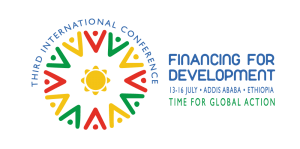Asking “Where is the hygiene?” in the Addis Ababa Action Agenda
July 16, 2015
Today the Third International Conference on Financing for Development, held in Addis Ababa, concluded. For many of you, this statement means very little, or perhaps conjures up images of government officials discussing how to ensure that the lofty Sustainable Development Goals actually become a reality. If you fall in the latter camp, you would be partially correct. The Financing for  Development Conference sought to address the challenges of financing and implementing the forthcoming Sustainable Development Goals, which will be critically important to the future landscape of global development.
Development Conference sought to address the challenges of financing and implementing the forthcoming Sustainable Development Goals, which will be critically important to the future landscape of global development.
The heads of state, government officials, and other delegates that met in Addis Ababa produced an outcome document, the Addis Ababa Action Agenda (AAAA), which outlines the agreed upon way forward. For us, this is significant because while water and sanitation is included in the AAAA, hygiene is noticeably absent in a few areas where it could have a real impact.
While the document acknowledges the role of cross-cutting areas for creating synergies upon which efficiencies can be built, it fails to include hygiene. For instance, it gives credence to the importance of countries delivering essential services, such as water and sanitation by encouraging countries to establish funding targets. This is certainly a step in the right direction. However, there are two areas of concern.
First, hygiene isn’t mentioned. One might argue that if water and sanitation hardware service delivery are occurring, than it is implied that hygiene is also being addressed. The fact of the matter is that far too often this is not the case. Hygiene is not implicit, so it must be explicitly mentioned and addressed as a separate but equal component of water and sanitation.
Second, we need to ensure that service delivery occurs in a more equitable fashion so that those who are most vulnerable, and therefore have most to gain from improved water, sanitation, and hygiene are able to access these life-saving services. Without indicators it is difficult if not impossible to guarantee that the bottom of the pyramid is benefiting from this investment. The current absence of a hygiene indicator in the SDGs does not inspire confidence that this important benchmarking will take place. As such, the international community both loses out on an opportunity to hold one another accountable for this investment, but it also increases the likelihood that hygiene will become deprioritized at the country level all together.
The objective for the Financing for Development Post-2015 framework, as put forth in the AAAA is to “end poverty and hunger, and to achieve sustainable development in its three dimensions through promoting inclusive economic growth, protecting the environment, and promoting social inclusion.” We know that poor hygiene can have a negative impact on major goals within the SDG framework, including those around hunger and malnutrition, education, and equity. Without a comprehensive WASH agenda with corresponding indicators, achievement of the overarching objectives that the international community has set forth will be stymied. We cannot afford for this to happen.
And we aren’t the only ones who think so. This week, over 90 global organizations lent their voice to the cause of hygiene by co-signing a letter to key UN decision makers. Individuals have joined the fight for hygiene by signing this petition, and you can do the same. Join us. Raise a hand for hygiene today.